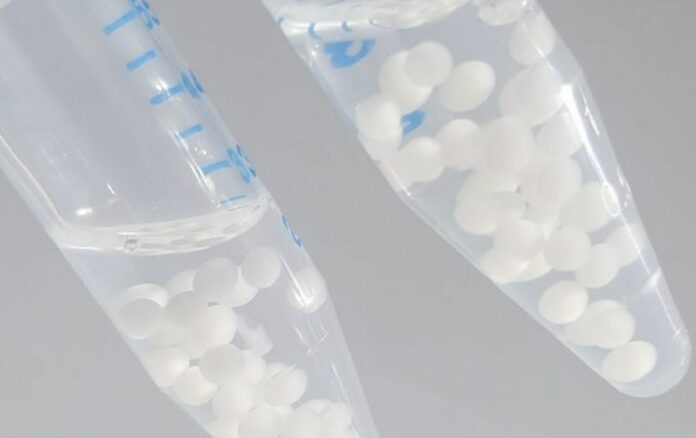Discarded plastic bottles accumulate in vast quantities each day, yet innovative microbial solutions might provide an effective response to this issue.
Researchers disclosed in ACS Central Science that they have successfully created a variant of E. coli capable of transforming polyethylene terephthalate (PET) waste into adipic acid.
This substance is a key ingredient in the production of nylon, medications, and fragrances.
Previously, Stephen Wallace and his team modified a strain of E. coli to convert terephthalic acid, a major component of aged PET bottles, into vanillin, a more valuable and appealing compound.
Simultaneously, other scientists were modifying microbes to change terephthalic acid into various smaller molecules, such as short-chain acids.
Building on this, Wallace and his new collaborators at the University of Edinburgh aimed to enhance E. coli’s biosynthetic abilities to include the conversion of terephthalic acid to adipic acid.
Conventionally, adipic acid is derived from fossil fuels through energy-intensive methods.
The research group engineered a novel E. coli strain capable of producing enzymes to change terephthalic acid into substances like muconic acid and adipic acid.
To facilitate the conversion of muconic acid to adipic acid, they employed another E. coli variant, which generated hydrogen gas, along with a palladium catalyst.
The results of their experiments indicated that tethering the engineered microbial cells to alginate hydrogel beads amplified their effectiveness, converting up to 79% of terephthalic acid into adipic acid.
The engineered E. coli system demonstrated its efficiency in producing adipic acid, even when tested with real-world samples of terephthalic acid sourced from a used bottle and a coating scraped off waste packaging labels.
Looking forward, the team intends to explore additional pathways to biosynthesize other high-value products.
Source: 10.1021/acscentsci.3c00414
Image Credit: Adapted from ACS Central Science 2023, DOI: 10.1021/acscentsci.3c00414
